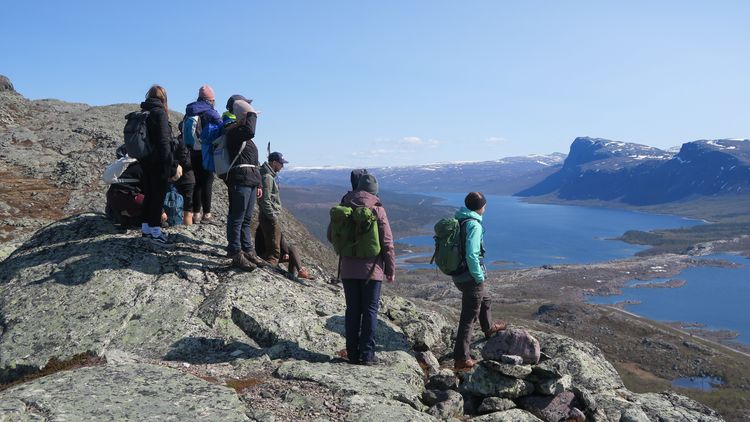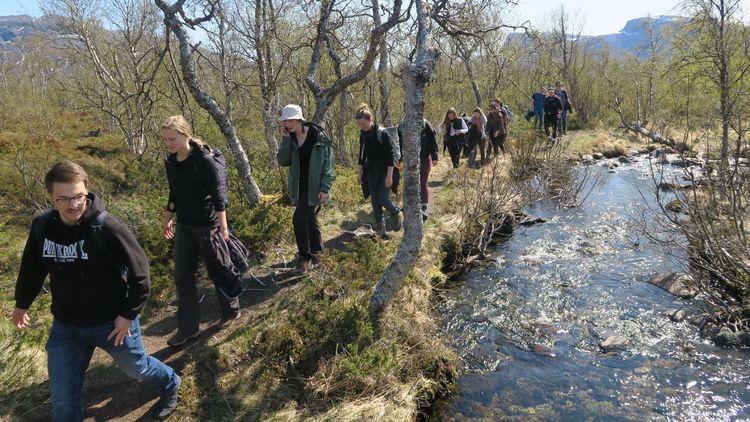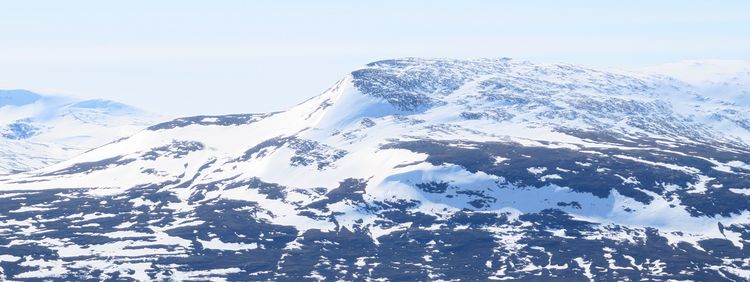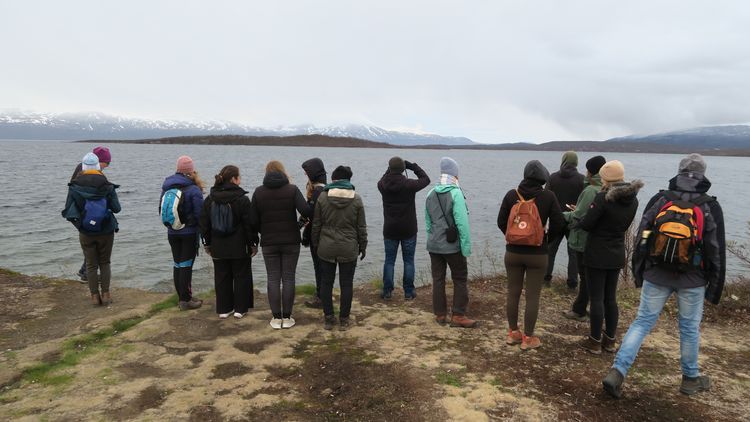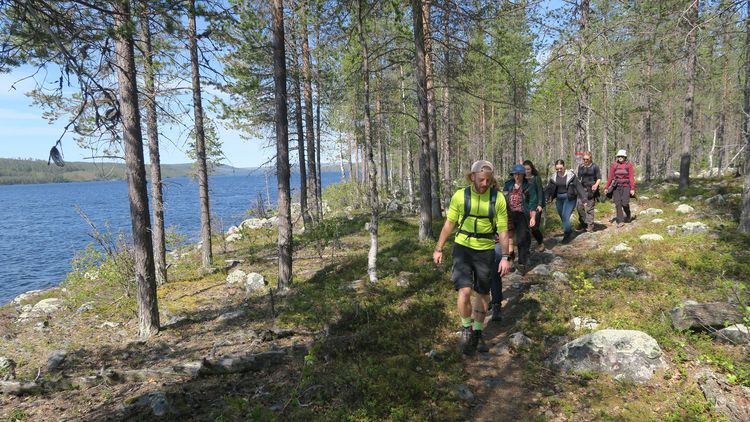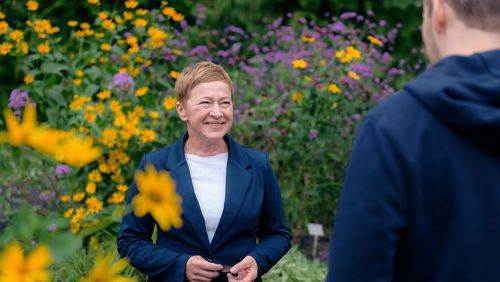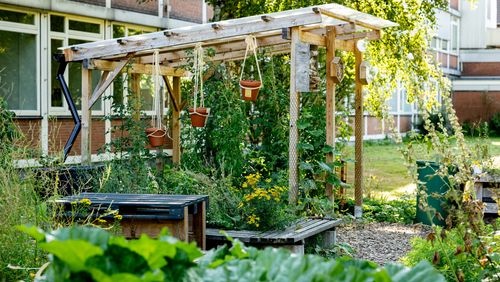Unspoiled nature, vast lakes, reindeer everywhere – on a field trip to northern Sweden, students from various degree programmes were able to experience all this first hand at some of Europe’s oldest national parks.
When Mareike Ropers looks back on her two weeks in northern Sweden she recalls breathtaking vistas of snow-covered mountain peaks, huge lakes in vales, and reindeer and elk peacefully grazing on the land. Mareike, a student in the master's programme Sustainability Economics and Management, was one of the participants in a field trip to several national parks in the region led by Professor of Geography Dr Ingo Mose. Such field trips are a fixed component of the module “Nature Conservation in Practice”, which is open to students of various degree programmes at the University. This year's agenda included the Abisko, Stora Sjöfallet and Muddus national parks in Sweden’s northernmost province, Norrbotten.
For Mose and his Austrian colleague Professor Dr Norbert Weixlbaumer from the Department of Geography and Regional Research at the University of Vienna, with which the University of Oldenburg’s Institute of Biology and Environmental Sciences has collaborated closely since 2005, northern Sweden was an obvious destination as its nature reserves are among the oldest in Europe. Established in 1909, the Sarek, Stora Sjöfallet and Abisko national parks were modelled on Yellowstone National Park in the US, which was founded in 1872.
The three parks marked the beginning of Sweden’s role as a pioneer of large-scale nature conservation in Europe. Mose sees the long history of the national parks as key to understanding their significance today: “The historical perspective is important in order to understand first of all the early motives of nature conservation in Europe and, second, the process of differentiation between the various goals of nature conservation, which is now far advanced." Then there are the challenges that large protected areas across Europe now face, including climate change, the biodiversity crisis, the energy transition and the phenomenon of excessive tourism, he adds.
Towards pan-European networks of protected areas
The national parks in northern Sweden have an ambivalent past: on the one hand they were at the forefront of the national park movement in Europe, but on the other hand the interests of the indigenous Sami population, which depends on the land there, were ignored when the parks were first founded. This situation has improved in the meantime, and today Sami stakeholders have a say in all major decisions.
The participants in this year’s excursion learned many things about nature conservation and regional development in northern Sweden. “The country attaches great importance to nature conservation according to the motto 'Let nature be nature',” says Mose. Due to their size, the national parks of northern Sweden play an important role in the EU member states’ goal of creating pan-European biotope networks.
The objective here is to form a network of protected areas spanning the entire continent, and thus provide a retreat for all kinds of animal and plant species. Several UNESCO Biosphere Reserves have also been recently established in Sweden to serve as learning areas for sustainable land use and regional development. These protected areas will thus also advance the goals set out the European Parliament’s recently approved Nature Restoration Act.
So why is it important that students acquire first-hand experience of nature conservation areas? Mose explains: “Field trips in subjects like Landscape Ecology or Sustainability Economics and Management follow the principle of ‘original encounters’. The aim is to provide students with the opportunity to see and experience things directly, on location, in a non-university learning environment.
Breathtaking views of mountain peaks
In this way, students learn with all their senses and also practise practical skills such as map-reading, identifying animals and plants and coping with changeable weather conditions. “Meeting local experts also plays an important role,” he adds. For her part, Oldenburg student Mareike Ropers is happy to have had the opportunity to “escape the daily routine at university” and network with students from other departments at the two participating universities.
And of course, field trips like this one offer participants wonderful experiences in pristine natural environments: “One hike in Stora Sjöfallet was especially challenging because the sun was shining fiercely but at the same time there were still snow fields on the mountain,” Mareike Ropers recalls. But the breathtaking views of the surrounding mountain peaks and huge lakes in the valleys, as well as encounters with reindeer and elk made it all worthwhile, she adds. And the hike through Muddus National Park, with its ancient trees, countless rocks and large lake was also a wonderful experience, she says.
Ingo Mose agrees: “I myself was fascinated and excited by the sheer dimensions of the landscapes in the north of Sweden.” There are only very few landscapes like this in all Europe, he explains: “The forests, rivers, lakes – everything is so much larger than what we are used to seeing in Central Europe and Germany.” He was also impressed by the “rugged beauty” of the lonely mountains. And because the field trip took place during the long, bright June days leading up to Sweden’s Midsummer, the participants got to experience Sweden as a country where the sun almost never sets.

